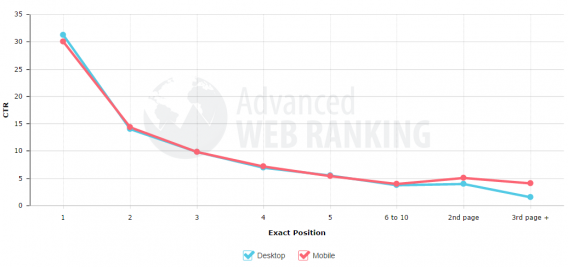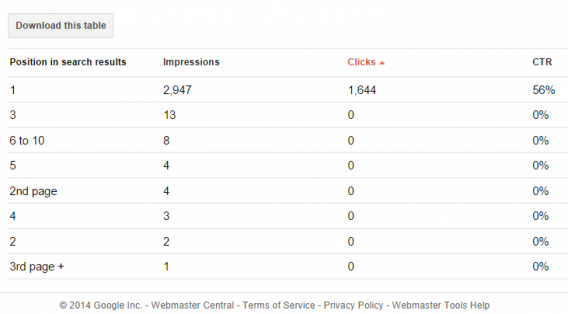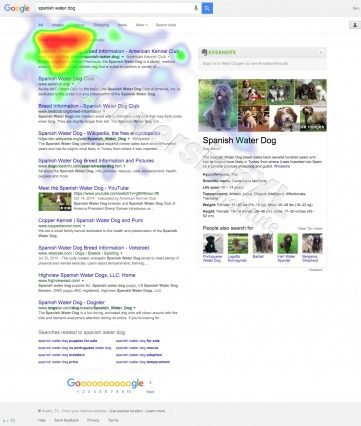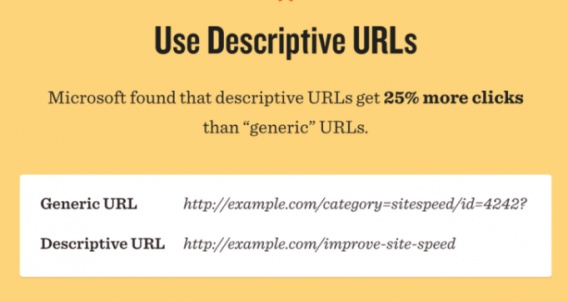How does click-through-rate affect SEO rankings? It’s a common question and debate in the optimization space.
Click-through-rate, a metric used frequently in various marketing crafts from copywriting to user experience, often comes up in regard to SEO. Does a high organic click-through-rate help SEO? Does it matter? If so, how can we improve organic click-through-rate?
This article will cover all of those answers and more.
What is Organic Click-Through-Rate?
Organic click-through-rate is very simple.
Like other click-through-rate metrics used in PPC, email, and on-page web design, organic click-through-rate is a calculated metrics that tells you how many people clicked through out of the total number of people who saw it. In organic SEO, this means how many people saw your search result, and how many people clicked through to the page.
Click-through-rate is, of course, very important.
If hundreds of thousands of people see your search result, but no one clicks on it, it’s wasted effort. It’s very similar to traffic generation and conversion rates – i.e. if you generate hundreds of thousands of visitors and no one converts, it’s wasted effort.
Similarly, investing in CTR optimization can bring a ton of ROI to your overall SEO efforts (the sentence of many acronyms, right there).
How is Click-Through-Rate Related to SEO?
Well, even if you’re the first SERP result and few people click through, you’re not optimized. Traffic is what counts (well, conversions count) not impressions, so in the most basic sense, click-through-rate optimization is a part of search engine optimization.
But do page with higher organic click-through-rate tend to rank higher? Well, here’s what the data say. First, a study from 2014. This one shows the percentage click-through-rate and how it corresponds with page position (ranking):
The way they collected it was from Google Webmaster Tools. The data would show the impressions, clicks, and corresponding click-through-rate for a link when it was in different positions. For this one, when the article was in position number one, the CTR was 56%.
So, this is somewhat old news. People click on the top ranked search engine results. There’s a huge dropoff when you go to position 3, 4, 5, etc., and especially when you reach the second page and beyond. We’ve seen this time and time again quantitatively, and also with visual data showing how users attention drops off pretty sharply towards the bottom of the page.
But is click-through-rate actually used as a ranking factor? In other words, if something ranking low on the results page gets a stunningly high click-through-rate, would Google bump it up?
This is a bit of a chicken versus egg problem – which came first? CTR and rankings are clearly codependent variables. Larry Kim wrote about a study performed at Wordstream where they tried to find an answer:

Larry Kim:
“The following graph takes the difference between an observed organic search CTR minus the expected CTR, to figure out if your page is beating — or being beaten by — the expected average CTR for a given organic position.
By only looking at the extent by which a keyword beats or is beaten by the predicted CTR, you are essentially isolating the natural relationship between CTR and ranking in order to get a better picture of what’s going on.

We found on average, that if you beat the expected CTR, then you’re far more likely to rank in more prominent positions. Failing to beat the expected CTR makes it more likely you’ll appear in positions 6–10.”
The bottom line: click-through-rate matters for organic rankings. If you bear the expected CTR, you’re in a good place. If you’re not, then expect rankings to fall.
Essentially, if something is ranking low on the first page, but it’s receiving a pretty high click-through-rate, that’s one indicator for Google that the content is what a searcher is looking for – or at least that it aligns with the query.
Here’s how Rand Fishkin, founder of Moz, put it in a Whiteboard Friday episode:

Rand Fishkin:
“So Google might be thinking if there’s a result that’s significantly over-performing its rankings ordinary position performance, so if for example we say, let’s look at the third result. Here’s “How to make perfect sushi rice.”

This is from makemysushi.com. Let’s imagine that the normal in this set of search results that, on average, the position three result gets about 11%, but Google is seeing that these guys makemysushi.com is getting a 25% click-through rate, much higher than their normal 11%.
Well, Google might kind of scratch their head and go, “You know what? It seems like whatever the snippet is here or the title, the domain, the meta description, whatever is showing here, is really interesting folks. So perhaps we should rank them higher than they rank today.”
Maybe that the click-through rate is a signal to Google of, “Gosh, people are deeply interested in this. It’s more interesting than the average result of that position.
Let’s move them up.” This is something I’ve tested, that IMEC Labs have tested and seen results. At least when it’s done with real searchers and enough of them to have an impact, you can kind of observe this. There was a post on my blog last year, and we did a series of several experiments, several of which have showed results time and time again. That’s a pretty interesting one that click-through rate can be done like that.”
Optimizing CTR, then, is good for two reasons. First, it likely improves organic rankings (and what ranks towards the top gets clicked more. Second, if more people click on your search result, you can more traffic – which of course is good, right?
How Can We Improve Organic Click-Through-Rate?
Increasing organic click-through-rates is no small topic. Consultants get paid lots of money to work on this problem, and teams of digital marketers at large web properties work on doing it systematically. Not only that, but there’s new research coming out all time as well as new updates to Google’s algorithm, so it’s hard to give definitive best practices for improving organic CTR.
That said, we can boil some commonly known strategies and tactics to demarcate three best practices that are pretty easy for anyone to experiment with.
1. Optimize Your Title
Title copywriting is a hard skill to master. Even though I write everyday (mostly longform, of course), I still get headaches when I try to write concise copy like headlines.
Luckily, there are a few principles that can help even non-poets write effective and concise headlines for increased CTR, such as:
- Use emotions
- Use numbered lists
- Be relatable
Most importantly: Read up on Copywriting
This post isn’t long enough to explore every principle of formula of copywriting. Therefore, I want to point you to some of my favorite resources on the subject:
- The Ultimate Guide to No-Pain Copywriting (or, Every Copywriting Formula Ever)
- 16 Copywriting Mistakes You’re Probably Making (and How to Fix Them)
- 5 Characteristics Of High Converting Headlines
You can also use PPC to help test out new headlines. Especially if you’re already using paid acquisition to promote your content, why not test out a few headlines to see which has the highest CTR? Facebook is quite easy for this particularly. Just keep all other elements the same and test the title. You don’t even need to spend much to get an early indication.
If you’re interested, here’s a full guide on Facebook A/B testing if you want to become an expert.
2. Optimize Your Meta Description
Here’s what a meta description is (the highlighted part):
While meta-descriptions aren’t, in and of themselves, a ranking factor, a good meta-description can increase click-through-rate, which as we’ve covered, can improve rankings.
What’s a good meta-description look like? According to Moz, the meta description tag should serve the function of ad copy. “It draws readers to a website from the SERP, and thus is a very visible and important part of search marketing,” they say.
In addition, you should avoid duplicate meta-descriptions.
Learn more about writing compelling meta-descriptions here.
3. Optimize Your URLs
Like the other tips here, structuring URLs is another non-trivial SEO skill.
Generally, though, it comes down to some pretty easy-to-follow best practices. Here are some laid out by Rand Fishkin from Moz:
- The more readable by human beings, the better
- Keywords in URLs: still a good thing
- Exclude dynamic parameters when possible
- Shorter > longer
- Match URLs to titles most of the time (when it makes sense)
- Including stop words isn’t necessary (like and, but, or, etc.)
- Remove/control for unwieldy punctuation characters
- Fewer folders is generally better
- Keyword stuffing and repetition are pointless and make your site look spammy
Most of it is common sense, but some of it you’ll have to experiment with on your own (like shortening URLs vs providing more description, etc.). If you’d like to learn more, here’s a good resource.
Conclusion
Click-through rate is important for SEO, in more than one way.
First, you want people to click-through to your site when they see any impression – an ad, a SERP result, an email, whatever. That’s the point of the experience, to get people to click through and engage with your content. Optimizing CTR has an innate benefit here.
But second, it seems that Google does indeed use organic click-through-rate as a ranking factor. SERP results that have a higher than expected CTR have been known to improve, and those with lower CTR to decline.
No matter the case, optimizing CTR will bring results, especially when replicated at scale.
Next lesson or Download guide as PDF
-
What is Click-Through Rate? Click-Through Rate Definition
What is a click-through-rate, actually? In one way, it’s a straightforward question, but on the other hand, it’s a metric that is used and abused by many different channels and in many different ways. -
What is a “Good” Click-Through Rate? Click-Through Rate Benchmarks
"What's a good click through rate?"...common question, no clearcut answer. This guide will cover industry and platform benchmarks so you can see where you stand. -
Email Click-Through Rate: What You Need to Know to Succeed
When you ask email marketers for the metrics they track, click-through rate (CTR) is likely to be one of their first answers. This article covers everything to do with email CTR. -
PPC Click-Through-Rate: What it Means and How to Use It (and Improve It)
Click-through rate (CTR) is one of the most important metrics you should be monitoring when implementing paid customer acquisition. -
The SEO Impact of Click-Through Rate (What You Need to Know)
How does click-through-rate affect SEO rankings? It’s a common question and debate in the optimization space. -
Click-Through-Rate vs Conversion Rate: What’s the Difference?
This article covers a CRO question: what's the difference between CTR and conversion rate and why does it matter? -
Conclusion
Summary and wrap up.





